Have you ever wondered how long capybaras can stay underwater? These fascinating creatures, known as the world’s largest rodents, are semi-aquatic marvels with some jaw-dropping underwater abilities. Whether you’re a wildlife enthusiast, a curious pet owner, or just someone who loves fun animal facts, you’re in for a treat. Let’s dive into the world of capybaras and uncover the secrets behind their incredible underwater skills.
Capybaras: Nature’s Aquatic Experts

Capybaras are native to South America, where they thrive in wetlands, rivers, and marshes. Their love for water isn’t just a preference—it’s a survival strategy. These gentle giants are built for life in and around water, with physical adaptations that make them exceptional swimmers and divers.
But just how long can capybaras stay underwater? The answer might surprise you.
How Long Can Capybaras Hold Their Breath?

Capybaras can hold their breath for up to five minutes underwater. This impressive ability allows them to evade predators, forage for aquatic plants, and even take naps while partially submerged.
Here’s how they do it:
- Efficient Oxygen Use: Capybaras slow their heart rate and conserve oxygen, enabling them to stay submerged longer.
- High Nostril Placement: Their nostrils are positioned on top of their heads, allowing them to breathe while keeping most of their bodies underwater.
- Webbed Feet: Partially webbed toes help them navigate water with ease, making quick escapes from predators like jaguars and anacondas.
Why Do Capybaras Spend So Much Time Underwater?

Capybaras aren’t just showing off—their underwater habits are crucial for survival. Here’s why they’re so drawn to the water:
1. Predator Evasion

Water is their safe haven. When threatened, capybaras dive underwater, using their five-minute breath-holding ability to stay hidden from land predators.
2. Thermoregulation
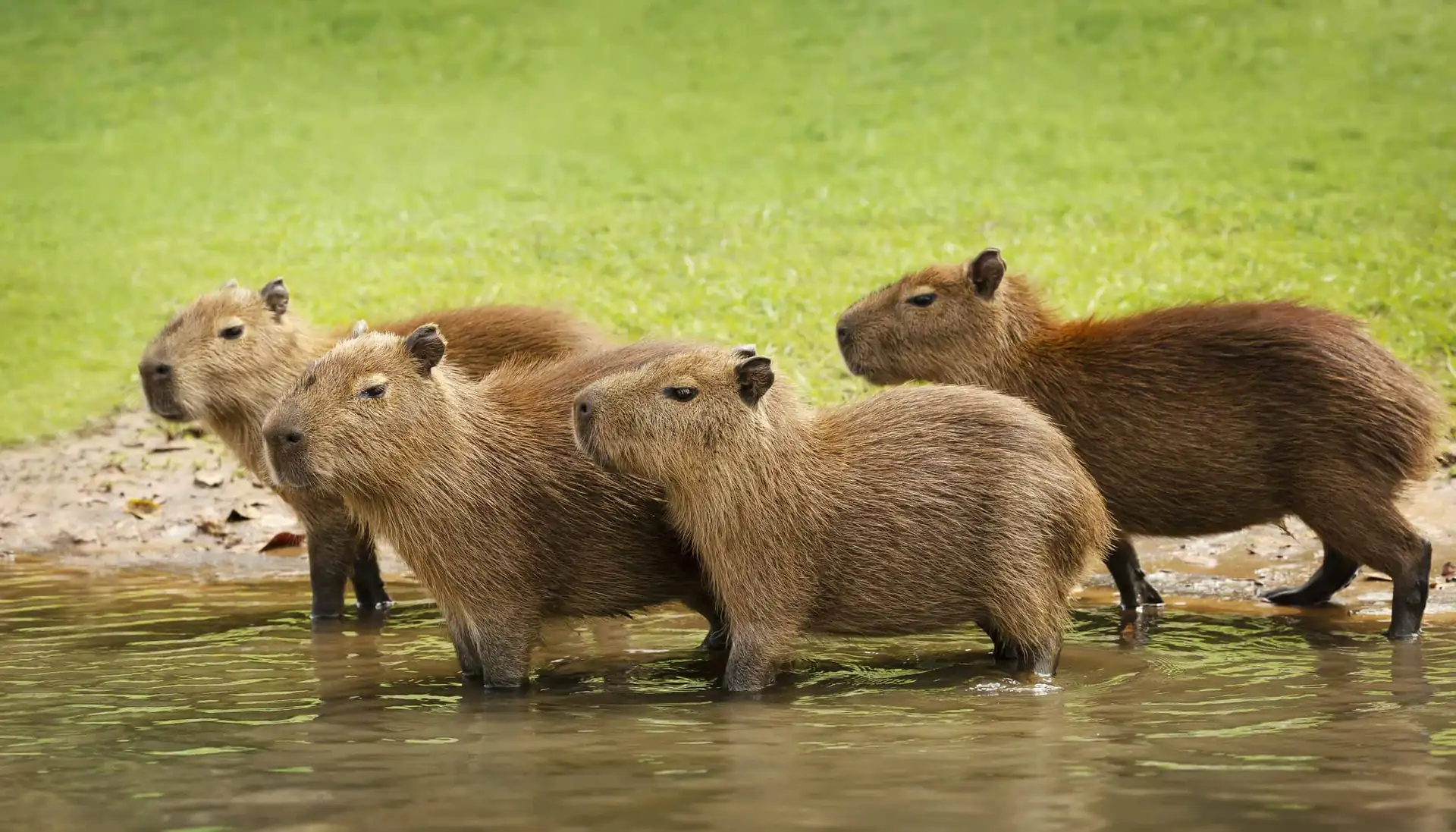
Living in hot, tropical climates, capybaras use water to cool down. Submerging themselves helps regulate their body temperature, especially during scorching afternoons.
3. Social Bonding

Capybaras are highly social animals. They often swim together, groom each other, and even mate in the water. It’s not just survival—it’s a way of life.
Capybara Swimming: Speed and Techniques
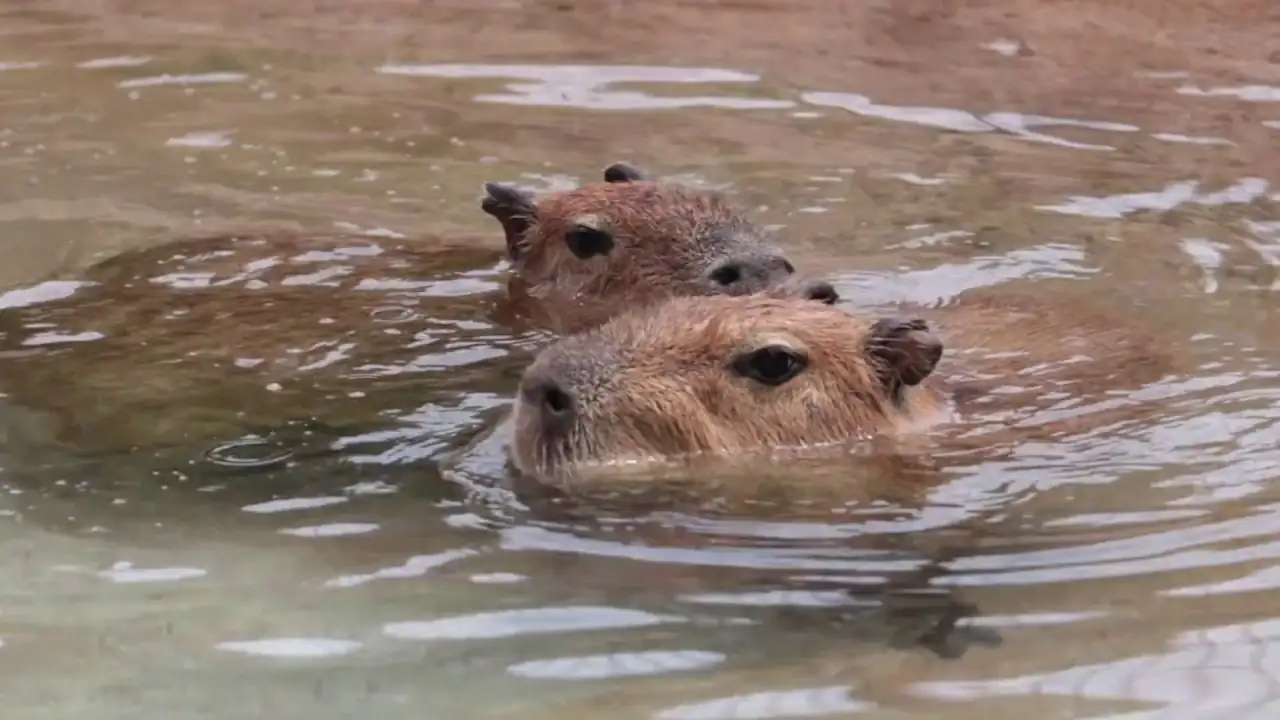
Capybaras aren’t just good at holding their breath—they’re also surprisingly fast swimmers. They can reach speeds of up to 5 miles per hour (8 km/h) in water. Here’s what makes them such efficient swimmers:
- Buoyant Bodies: Their rounded shape helps them stay afloat effortlessly.
- Powerful Legs: Strong hind legs provide the thrust needed for quick movements.
- Streamlined Movement: Their ability to glide through water with minimal drag makes them agile and graceful.
Can Capybaras Breathe Underwater?
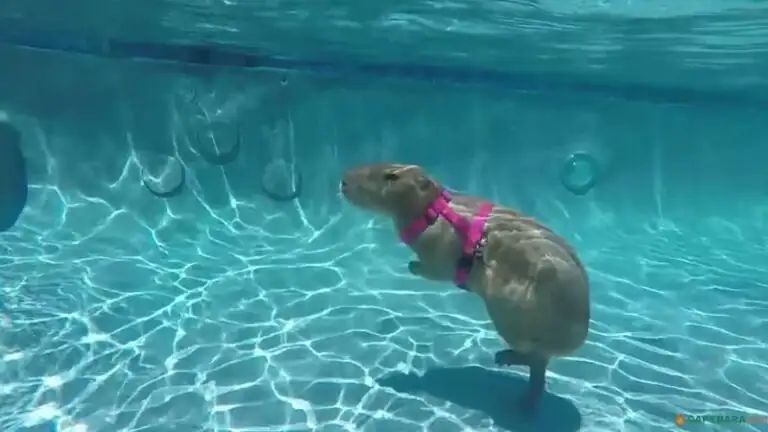
Nope! Despite their aquatic lifestyle, capybaras are mammals and need to surface to breathe. However, their unique adaptations allow them to stay mostly submerged while still accessing air. Their nostrils, eyes, and ears are positioned high on their heads, enabling them to keep a low profile in the water.
Fun Facts About Capybaras and Water
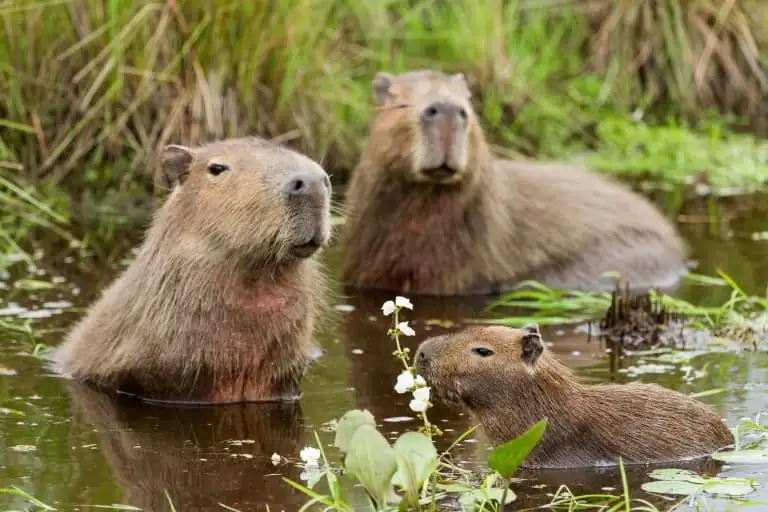
- Sleeping Underwater: Capybaras can nap in the water, keeping only their noses above the surface for breathing.
- Hot Springs Lovers: In colder climates, like Japanese zoos, capybaras are often seen relaxing in hot springs to stay warm.
- Fruit Baths: Some capybaras enjoy swimming with oranges or lemons, which not only looks adorable but also soothes their skin.
FAQs About Capybaras and Their Underwater Abilities
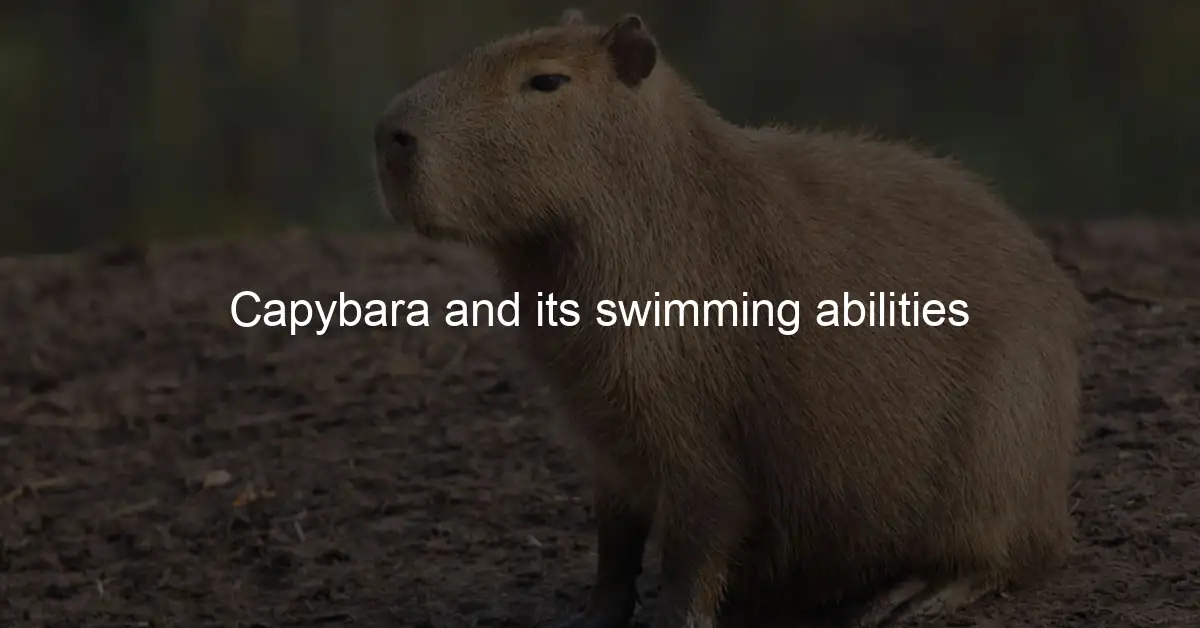
1. Can capybaras drown?

Yes, capybaras can drown if they’re unable to surface for air. While they’re excellent swimmers, they’re not immune to accidents, especially in strong currents or if injured.
2. How deep can capybaras dive?
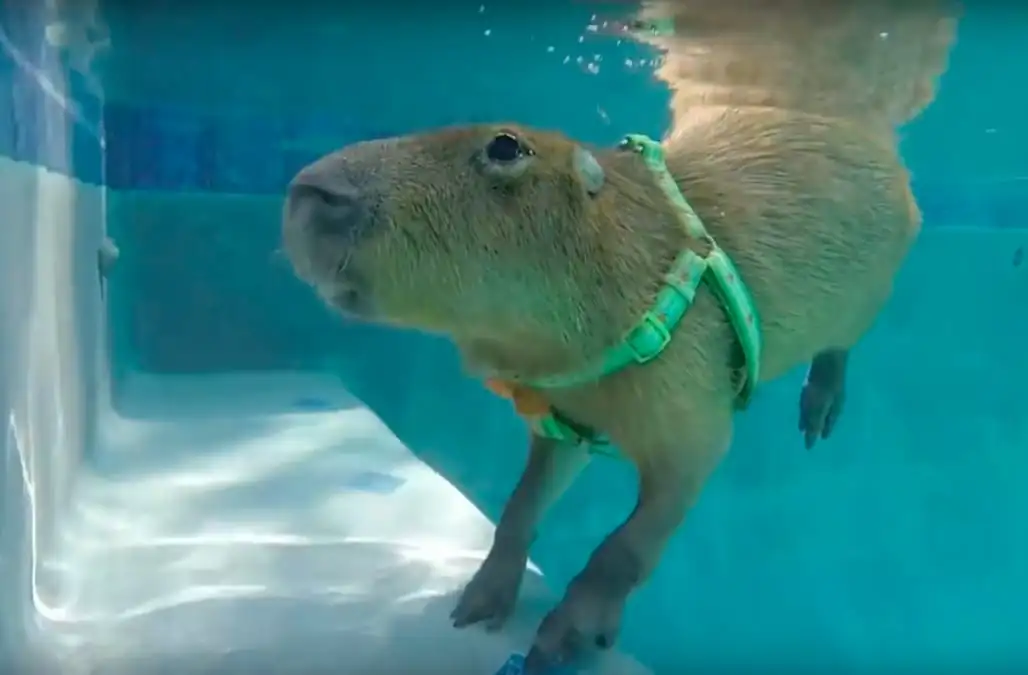
Capybaras can dive to depths of up to 4-6 feet (1.5-1.8 meters) while foraging or escaping predators.
3. Do capybaras need water to survive?

Absolutely! Water is essential for their diet, social interactions, and thermoregulation. Without access to water, capybaras would struggle to survive.
4. Can capybaras swim in chlorinated pools?
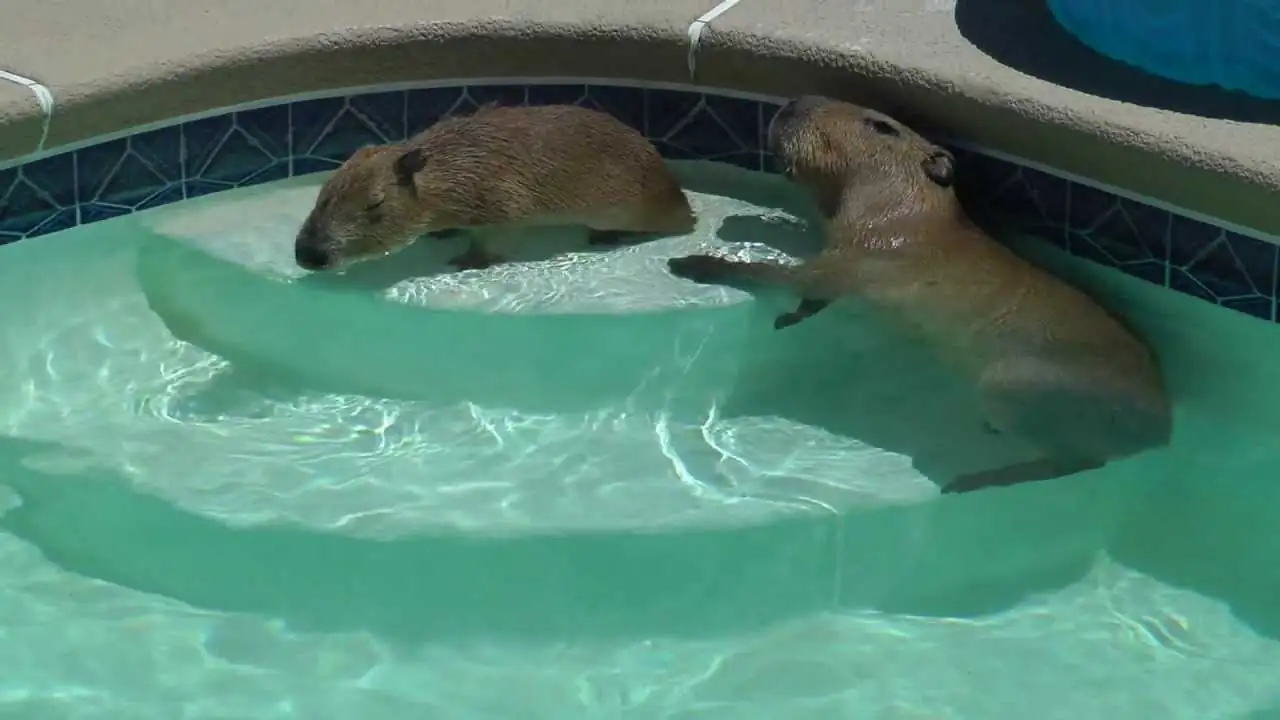
No, chlorinated pools are harmful to capybaras. Chlorine can irritate their skin, eyes, and respiratory system. If you have a pet capybara, opt for a natural or saltwater pool instead.
Why Capybaras Are Nature’s Ultimate Water Lovers

Capybaras are a testament to nature’s ingenuity. Their ability to stay underwater for up to five minutes, combined with their swimming prowess and social nature, makes them one of the most fascinating creatures on the planet. Whether they’re evading predators, cooling off in the heat, or simply enjoying a relaxing swim, capybaras show us how to thrive in both land and water.
So, the next time you see a capybara lounging in a pool or diving into a river, you’ll know just how remarkable these animals truly are.
Final Thought: From their five-minute breath-holding ability to their love for hot springs, capybaras prove that life is better when you’re near the water. How long can capybaras stay underwater? Long enough to remind us why they’re nature’s ultimate aquatic rodents.

